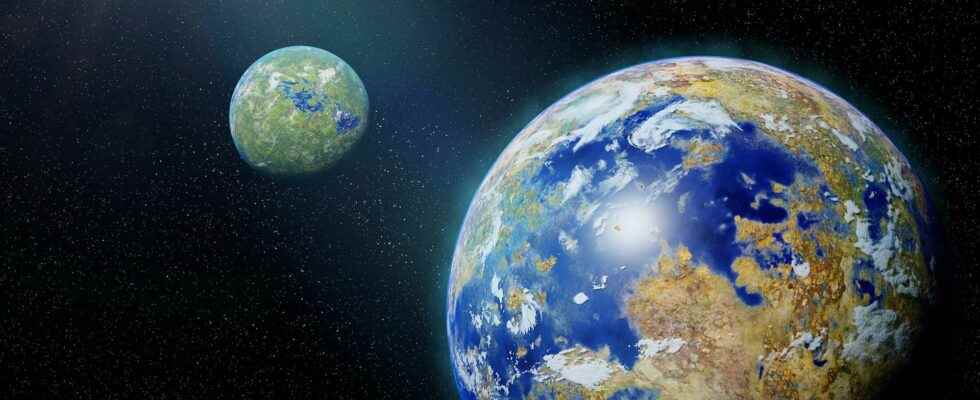Are we alone in the Universe and how do the planets become the cradle of life? To answer these two questions, a team of Chinese scientists is proposing a space astrometry mission that is betting on discovering habitable planets like ours. That is to say of similar size and mass, evolving in the habitability zone of stars of spectral type F, G and K like our Sun.
You will also be interested
[EN VIDÉO] On the way to Proxima b, the closest habitable exoplanet to us Leave the Solar System to reach Proxima b, the habitable exoplanet discovered around Proxima Centauri, the closest star to the Sun.
A few days ago, we introduced you to the Chinese project for a space observatory to look for earth-like planets and potentially habitable. Today, Futura invites you to discover thestudy of an even more ambitious space mission, carried out by a team of scientists from prestigious Chinese institutes and organisations. This is Ches (Closeby Habitable Exoplanet Survey) designed to discover Earth-like habitable planets, similar in size and massin habitable zone aroundstars solar type and close to us. That is to say located more or less 32 light years of us (10 parsecs).
According to Jean Schneider, astrophysicistCNRS Emeritus Research Director at the Paris-Meudon Observatory and member of Plato’s scientific team, “ this project appears much more interesting than the transits of the Earth 2.0 space observatory because it is likely that it would not do better than the mission plato of the’European Space Agencywhose launch is guaranteed “.
Ches is an astrometry mission which will focus on the observation of a hundred F, G and K type stars, already selected, in order mainly to characterize in depth the planetary systems of these stars. the telescope will be equipped with a mirror 1.2 meters and will operate for at least 5 years at Lagrange point number 2, where theJames Webb Observatory. These data should also help us improve our understanding of the formation of planetary systems, theemergence of life (although strictly speaking Ches will not detect any active life forms) and could possibly reflect the evolution of our own Solar system.
Precision astrometry, the key to “Earth-like” discovery
According to the authors of the study, precision astrometry, carried out from space, is the best way to find terrestrial planets in the habitable zone stars near us. With an accuracy of the order of a microsecond of arc, the Ches satellite will be able to detect and locate planets similar to Earth by measuring the smallest changes and disturbances that will affect the target stars. These measurements will be made relative to the six to eight reference stars for each target star.
In March 2022, 38 candidates fromexoplanets in habitable zones have been discovered, mostly around M-type stars. These planets have been mainly detected by the methods of measuring transits and gears radial. But the transit method can only measure the size of the planet rather than its actual mass, and the radial velocity measurement can only reveal the minimum mass of the planets which are all much larger than Earth. Today, it is therefore not yet possible to confirm whether these planets are terrestrial type planets. The detection of habitable planets requires the extreme accuracy that high-precision astrometry seems to allow.
Ches wants to be a complementary mission to the future others that will be launched in the coming years, including Plato and Ariel of the European Space Agency, the Nancy Roman Space Telescope of the Nasa or the Xutian telescope, two meters in diameter which will fly in a co-orbital configuration with the Chinese space station.
Interested in what you just read?
